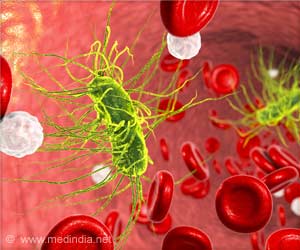“Our small peptides are able to penetrate nerve endings and provide long-lasting pain relief after a single administration,” said senior author Arin Bhattacharjee, PhD, associate professor of pharmacology and toxociology in the Jacobs School.
“Pain is usually considered a symptom of injury,” said Bhattacharjee. “Pain neurons transmit their information to the brain, informing the brain of both the location of the injury and the severity of the injury.
At the molecular level, our research is helping unravel how tissue injury signals to pain-sensing neurons. If we can understand this at the molecular and cellular level, we can then identify novel pain-killing targets.”
Bhattacharjee and first author Rasheen Powell, PhD, who earned his doctorate from UB in August, discovered that in order to signal pain, a specific type of pain neuron requires endocytosis, the process by which cells engulf external materials or materials at the membrane.
Those neurons or calcitonin-gene related peptide (CGRP)-containing pain neurons, preferentially express a specific endocytosis subunit called AP2A2, which other sensory neurons do not.
“This finding is particularly exciting because a specific subset of pain neurons in the dorsal root ganglia (DRG) in the peripheral nervous system expresses AP2A2 while other populations of sensory neurons in the DRG do not,” said Powell, now a postdoctoral fellow in the Department of Neurology at Harvard Medical School.
“This suggests that this subunit has an important role in these particular pain neurons, which are responsible for a majority of inflammatory pain behaviors observed in rodents and humans.”
Endocytosis in these neurons was vital for the development and maintenance of inflammatory pain.
“But when we inhibit endocytosis with either a genetic or pharmacological approach, we observe profound reductions in behaviors indicative of pain,” Powell said.
Even under conditions that promote hyperactivity in pain neurons, the researchers found they could reduce this hyperactivity and pain perception.
“By inhibiting endocytosis, we are able to prevent pain-sensing neurons from relaying pain information to the central nervous system,” said Powell.
They disrupt endocytosis when applied locally at pain nerve endings.
“In clinical practice, we use local approaches all the time to block pain,” said Bhattacharjee. “Anesthetics are effective at blocking pain but the problem is, they block all sensory neurons, so the patient feels numb, and they are very short-lived. After the anesthetic wears off in a few hours, painkillers are often needed.
“We found that when locally applied, our peptide decreased pain behaviors in multiple inflammatory pain models for up to six days,” he said.
Most of the adverse side effects can be avoided, especially the risk of addiction. Adverse side effects are also a key reason why new drugs often fail to get U.S. Food and Drug Administration approval; local delivery of drugs avoids that downside.
But, the local delivery of drugs can have their own limitations: They tend to diffuse away quickly from the site where they were administrated.
“Our novel technology seems to solve this problem by getting into nerve endings and staying there,” he said. “The result is a long-lasting reduction in pain behavior.”
In animals studies, researchers conducted, if pain was already established, females did not respond as well to the peptide compared to males.
But if the peptide was administered right at the time of injury, females had a much better reduction in pain behavior than their male counterparts did.
“These data follow human clinical studies,” said Bhattacharjee, “where there is a sex difference in both the prevalence and intensity of chronic inflammatory and post-operative pain in humans. This underscores the importance of gender considerations in analgesic development.”
The researchers plan to focus on preclinical formulation and toxicology studies to enable a new Investigational Drug Application for human testing.
Source: Medindia



